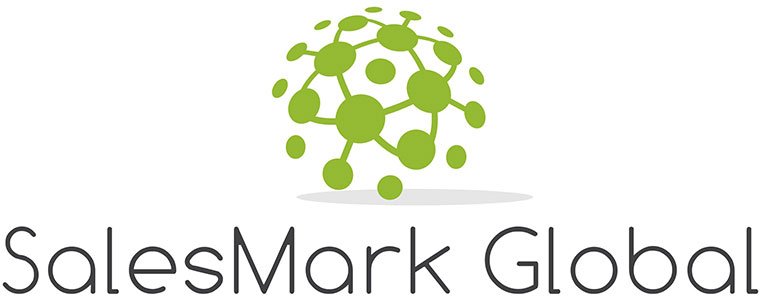Not every customer is equal in the SaaS world. Some churn fast, and there are some that stick around and grow with your product. A profile of an ideal customer (ICP) can be used as a way to figure out the companies that will get the most value out of your solution and create long-term value. In the same way, by knowing your ICP and targeting, you lower the cost of acquisition, raise retention, and raise lifetime value. Such a targeted way enables your team to work smart, rather than hard.
This article steps you through a framework that is proven to work to develop your SaaS ICP and use it to increase precision, performance, and profitability: Identify → Target → Grow—a strategy to boost precision, performance, and profitability.
Table of Contents
1. What is an Ideal Customer Profile (ICP)?
2. Step 1: Identify – Research and Define Your ICP
2.1. Start with Existing Customers
2.2. Segment by Firmographics and Technographics
2.3. Analyze Needs and Pain Points
2.4. Tools for ICP Research
3. Step 2: Target – Align Marketing and Sales Efforts
3.1. Craft Tailored Messaging and Content
3.2. Choose the Right Channels
3.3. Score and Qualify Leads Based on ICP Fit
4. Step 3: Grow – Optimize Retention and Upselling
4.1. Customize Onboarding for ICP Segments
4.2. Monitor Engagement and Usage Metrics
4.3. Expand Within ICP Accounts
5. Common Mistakes to Avoid When Building Your SaaS ICP
5.1. Basing ICP Only on Intuition, Not Data
5.2. Making It Too Broad or Too Narrow
5.3. Ignoring Evolving Customer Needs
5.4. Not Aligning Internal Teams Around the ICP
6. Best Practices and Pro Tips
6.1. Keep Your ICP Updated Quarterly
6.2. Use Customer Interviews to Validate Assumptions
6.3. Align Product Development with ICP Needs
6.4. Involve Cross-Functional Teams: Marketing, Sales, Success, Product
Final Thoughts
1. What is an Ideal Customer Profile (ICP)?
An Ideal Customer Profile is simply a deeper description of what kind of organization makes the most sense to your SaaS offering. As opposed to a buyer persona focused on individual users or decision makers, an ICP comprises the type of company in terms of size, industry, tech stack, pain points, and behaviors.
An important attribute of ICPs within the SaaS go-to-market is that they enable teams to target high-value prospects instead of over-reaching, time-wasting audiences. Having the best-fit customers will enable you to personalize messages, prioritize leads, and establish onboarding that churns.
Once clear ICP is agreed upon by sales, marketing and product teams, there is consistent messaging as well as smart targeting and product features that appeal. Finally, it allows SaaS companies to develop highly scalable, repeatable, and profitable growth engines.
2. Step 1: Identify – Research and Define Your ICP
2.1. Start with Existing Customers
Take your best existing customers that remain the longest, spend the most, and are satisfied the most. Consider the best churn and best engagement accounts. Seek patterns in industry, size, and behaviour of use. Some of the most important indicators that should be considered are Customer Acquisition Cost (CAC), Lifetime Value (LTV), churn rate, and product usage frequency. This information is the building block of a good and knowledge-based ICP.
2.2. Segment by Firmographics and Technographics
Then categorize such customers by firmographics and technographics. Firmographics encompass industry, size of the company, revenue, and geographic location. Technographics are the technologies adopted by these companies e.g., the CRM, cloud providers, or integration tools.
The result of this segmentation is to show you patterns and compatibility so that you can establish the traits of your most successful customers and market to more of them in similar organizations.
2.3. Analyze Needs and Pain Points
It is important to know why your best customers engage in the use of your product. Find out what their business objectives, problems, and job functions are during the purchase. Identify the factors that made them decide to find a solution, and how your product will solve their problems.
This qualitative impression aids in building a more in-depth and tactical ICP that transcends the initial demographics and entails getting into the business and intentions.
2.4. Tools for ICP Research
Make your ICP research technology driven. Utilize CRM systems, product analytics, customer interviews, surveys and third-party data on intent to find input. LinkedIn Sales Navigator or other platforms may be used to investigate the professional opportunities and the company internal processes.
By merging data-oriented tools with the qualitative findings, you will walk away with the ICP that is tested and checked, but also flexible to the dynamics of the changing market.
3. Step 2: Target – Align Marketing and Sales Efforts
3.1. Craft Tailored Messaging and Content
When you have a clear ICP to work with, then use that data to come up with hyper-personalized messaging. Personalize content on both pain points and objectives of each segment. It can be a landing page, an email campaign, or a paid ad, but talk to them personally at the niche, at the job they perform and at the problem they face.
Apply the success stories and use cases that reflect the context of ICP. Personalization is increasing engagement, trust, and conversions- and every dollar spent on marketing is worth it and every sales pitch is related to the customer.
3.2. Choose the Right Channels
There is no need to pop up everywhere; it is only where your ICP is. Site areas where they spend time on the internet: LinkedIn B2B, Slack communities, a specific industry webinar, or a review site.
You should select the online avenues and activities in which your ICP is already consuming the content and trying to find solutions. Appearing in the right spaces where your prospects are, you will enhance reach and engagement, and a conversion at a cheaper acquisition price.
3.3. Score and Qualify Leads Based on ICP Fit
Lead scoring models are even stronger when they are constructed on ICP attributes. Applying firmographic and technographic indicators, you can use them to attribute inbound lead scores. Include behavioral information, such as the downloading of content or requesting a demo, to determine intent.
Automate and use artificial intelligence-based platforms to highlight high-fit prospective customers, forward them to sales, and dampen low-fit prospects. This prioritization will allow SDRs and AEs to concentrate their energy in the place where it changes the most, promoting opportunities that connect to your growth objectives.
4. Step 3: Grow – Optimize Retention and Upselling
4.1. Customize Onboarding for ICP Segments
Onboarding is not one size fits all. Apply your ICP knowledge to create segment-based onboarding funnels. Personalized welcome paths, segment-specific help docs, and ICP-perspective product templates, just to name a few, make the experience custom to achieve faster time to value.
Win early and gain trust. Enabling customers to achieve success in line with their objectives on day one increases the chance of retention, engagement, and growth, leading to better retention and less churn.
4.2. Monitor Engagement and Usage Metrics
Measure ICP-specific activity based on KPIs relevant to their business. Measure usage of features, logins, support tickets, and survey responses.
Evaluate customer health with the help of such tools as Mixpanel, Gainsight, or your product dashboards. These metrics enable your customer success team to step into the process preemptively when there is a chance of problems and discover growth opportunities in well-performing accounts.
4.3. Expand Within ICP Accounts
Customers that are aligned with ICP are viable more often than not when it comes to upsell, cross-sell. Leverage data to find opportunities for new teams, use cases or geographic splits in the same company.
Success-led growth and account-based marketing initiatives are better suited when the ICP is perfect. It is easier to invest more since they already observe value. It is more tailored and pitches to their specific structure and developing needs.
5. Common Mistakes to Avoid When Building Your SaaS ICP
5.1. Basing ICP Only on Intuition, Not Data
Founder instincts are essential, but an ICP created out of the gut can be dangerous. Receive influence over decisions based on data about your CRM, usage of the product, and win/loss analysis. That is because basing your ICP on facts would produce more predictable and scalable growth.
5.2. Making It Too Broad or Too Narrow
Your ICP should gradually develop with the maturing of your product. Customers who fit very well earlier on may not fit with the new pricing structure, features, or markets. It is important to continually revise who benefits most from your product in the present.
5.3. Ignoring Evolving Customer Needs
When marketing, sales, and product teams are working on different perceptions of an ideal customer, confusion takes place. Create a common ICP document and train all parties. Cross-functional alignment allows organizations to have consistent messaging, ease of handoff, and improved customer experiences.
5.4. Not Aligning Internal Teams Around the ICP
Your ICP does not remain in the same place. Revisit it at least once every quarter so that it coincides with evolutions of the product, the market, and customer opinion. Take the freshest CRM data, churn analysis, and NPS scores and adjust firmographic and behavioral markers.
6. Best Practices and Pro Tips
6.1. Keep Your ICP Updated Quarterly
Keeping it up to date means that you are always going after the best fit opportunities, have a higher ROI, and not fall into tread water as your business grows.
6.2. Use Customer Interviews to Validate Assumptions
Whether quantitative or qualitative, data is one thing, but it is also better to have context with qualitative feedback. Interview existing customers, those who churn, and even those who have lost deals. Question them on the purchase triggers, decision-making activity, and satisfaction regarding your solution.
Such discussions can divulge underlying motivations and objections which can affect your ICP criterion to a great extent and can assist in the outreach, product design and onboarding.
6.3. Align Product Development with ICP Needs
Make ICP feedback actionable by adding it to your product roadmap. Are there omitted features that fans of expansion are keeping back? Are there current tools that are underexploited due to UX problems?
Product-market fit is not a goal post that you hit and then fall back on. With the help of the ICP, prioritize features in a way that the customer segments benefit from your features, and are your most valuable customers, to build a reinforcing cycle of retention and growth.
6.4. Involve Cross-Functional Teams: Marketing, Sales, Success, Product
It is not your ICP as a marketing tool only; it is a compass to your company. Involve all departments in the ICP development process so that the departments can exchange information, assumptions can be refined, and buy-in can be achieved.
It fosters better organizational operation when everybody is knowledgeable and enthusiastic regarding the ICP. All processes surrounding lead scoring, onboarding, product feedback, and support will be more specific and efficient, and increase results all around.
Final Thoughts
Your Ideal Customer Profile is not an option you check off or a strategy that only fits in one section of your SaaS business. The Identify – Target – Grow process enables you to take the insights to action, and guesswork to accuracy.
Effective ICP helps to bring your energy to one place, coordinate your departments, and to optimize customer lifetime value. However, do not forget that your ICP is supposed to be changing along with your product, market, and customer base. Make it nimble, data-based and team-oriented.
When the world is full of noise, your Singapore competitive advantage is clarity. Your ICP provides you with exactly that clarity and a path to sustainable and scalable SaaS growth.
Visit Our SalesMarkBlog Section to Uncover the Sales Strategies That Ignite Your Sales Journey!





